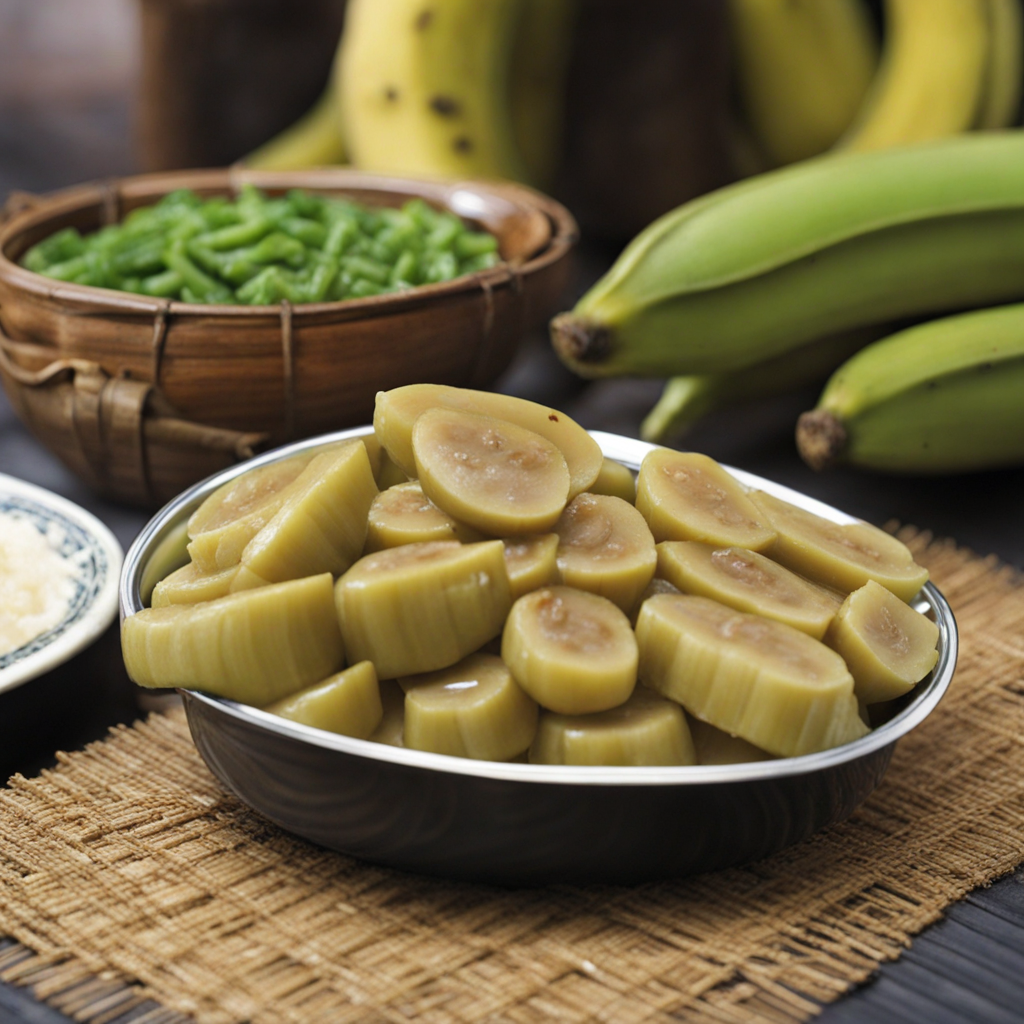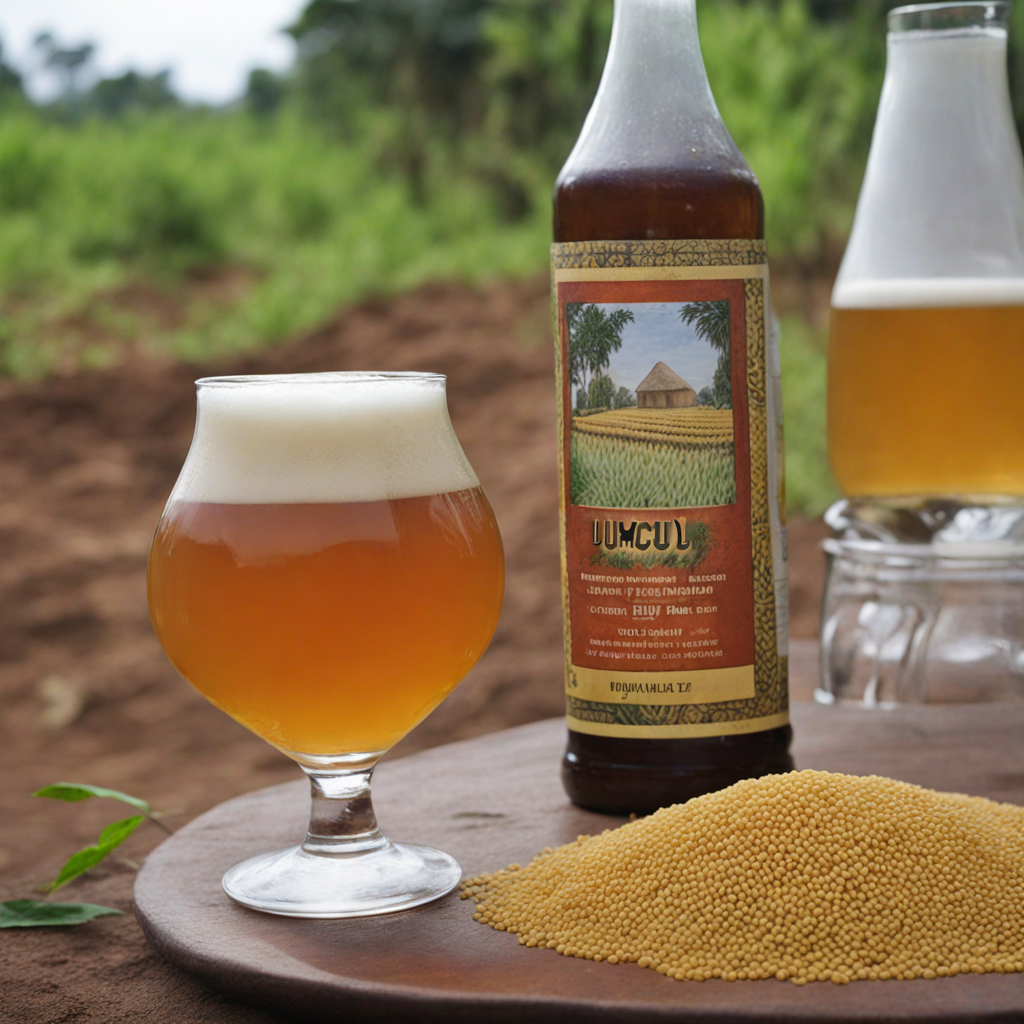Isogi
Isogi is a traditional Rwandan dish that embodies the rich cultural heritage and agricultural bounty of the region. This dish primarily features a mix of ground maize, often combined with beans, which are staples in Rwandan cuisine. The maize is typically cooked to a creamy, porridge-like consistency, creating a comforting base that is both filling and nutritious. The incorporation of beans not only adds a delightful texture but also boosts the protein content, making Isogi a wholesome meal option that is both satisfying and energizing. The preparation of Isogi can vary, with some variations including the addition of local vegetables such as spinach or pumpkin leaves, which infuse the dish with vibrant colors and essential nutrients. Other versions might incorporate spices and herbs, offering a subtle balance of flavors that enhance the overall experience. Often enjoyed with a side of grilled meat or fish, Isogi serves as a versatile accompaniment that complements the rich tastes of Rwandan proteins while allowing the natural flavors of the ingredients to shine through. Isogi is not just a dish but a culinary experience that reflects the communal spirit of Rwandan dining. It is often shared among family and friends, allowing for a sense of togetherness and celebration. As you savor Isogi, you'll discover a unique blend of simplicity and heartiness that showcases Rwanda's agricultural heritage. Each bite tells a story of the land and its people, making Isogi a delightful introduction to the diverse flavors of Rwandan cuisine.
How It Became This Dish
The History of Isogi: A Culinary Treasure of Rwanda #### Origins of Isogi Isogi, a traditional dish from Rwanda, is a vibrant representation of the country’s agricultural heritage and culinary creativity. The dish primarily consists of ripe bananas, specifically the East African highland banana variety, which is a staple in Rwandan diets. The cultivation of bananas in Rwanda dates back centuries, with evidence suggesting that they were introduced to the region around 1000 AD. This introduction coincided with the Bantu migrations, which saw agricultural practices spread across the African Great Lakes region. The name "Isogi" derives from the Kinyarwanda word for "to mash," reflecting the traditional preparation method where cooked bananas are pounded into a smooth, creamy consistency. This simple yet labor-intensive process highlights the communal aspect of Rwandan culture, as food preparation often involves family and friends working together, sharing stories, and strengthening bonds. #### Cultural Significance Isogi is not merely a dish; it embodies the spirit and resilience of the Rwandan people. It is often served during significant events, such as weddings, funerals, and community gatherings, playing a critical role in Rwandan social life. The dish symbolizes hospitality and abundance, with families serving Isogi to guests as a gesture of welcome and respect. In Rwandan culture, food is deeply intertwined with identity and tradition. Isogi reflects the agricultural practices of the region, showcasing the importance of bananas in local diets. The dish is usually accompanied by a variety of sides, such as beans, meat, or vegetables, creating a balanced meal that honors the principles of Rwandan cuisine: simplicity, freshness, and community. Moreover, Isogi carries historical connotations. During times of hardship, such as the colonial period and the tragic events of the 1994 genocide, Rwandans relied on their agricultural staples like bananas to survive. Isogi became a symbol of endurance and a reminder of the nation's ability to rise from adversity, utilizing homegrown resources to nourish their families. #### Development Over Time The evolution of Isogi over the years can be traced through various historical and social changes in Rwanda. Initially, the dish was prepared using traditional methods, with families cultivating their own bananas and using wooden mortars and pestles to mash them. This labor-intensive approach not only fostered communal ties but also ensured that meals were made from the freshest ingredients. As Rwanda experienced political and economic changes, including the impacts of colonization and urbanization, the preparation and consumption of Isogi began to shift. The introduction of modern cooking techniques and tools, such as electric blenders, made the process easier and quicker. However, many Rwandans still prefer to prepare Isogi using traditional methods, as they believe it enhances the flavor and texture of the dish. In the post-genocide era, Rwanda witnessed a revival of traditional culinary practices as part of a broader movement to reclaim cultural heritage and promote national unity. Food became a medium for healing, and Isogi, with its rich history and communal significance, played a vital role in this process. Culinary festivals and events began to highlight traditional dishes, including Isogi, celebrating Rwanda’s agricultural bounty and the resilience of its people. In contemporary Rwanda, Isogi has found its place on both local and international stages. As Rwanda positions itself as a destination for culinary tourism, traditional dishes are being reimagined and showcased in high-end restaurants and hotels. Chefs are experimenting with Isogi, pairing it with global cuisines and presenting it in innovative ways while retaining its cultural essence. This fusion of tradition and modernity has allowed Isogi to remain relevant in a rapidly changing world, appealing to both locals and visitors alike. #### Nutritional Value and Variations Isogi is not only culturally significant but also nutritionally valuable. Bananas are rich in potassium, fiber, and vitamins, making Isogi a healthy choice. The dish is often enriched with additional ingredients like beans, which add protein and other essential nutrients, making it a well-rounded meal. Variations of Isogi can be found throughout Rwanda, with different regions adding their unique touches, such as spices or local vegetables, further enhancing the dish’s diversity. One popular variation includes the addition of groundnut (peanut) paste, which adds a rich, nutty flavor and creaminess to the dish. Some families may incorporate leafy greens or other vegetables, reflecting the seasonal availability of produce and local preferences. This adaptability showcases the resilience of Rwandan cuisine, allowing Isogi to evolve while remaining rooted in tradition. #### Global Recognition and Future In recent years, Isogi has garnered attention beyond Rwanda’s borders. As global interest in African cuisines grows, chefs and food enthusiasts have begun to explore the flavors of Rwanda, with Isogi often taking center stage. Food blogs, documentaries, and culinary showcases have introduced this dish to an international audience, highlighting its cultural importance and rich history. The future of Isogi looks promising as Rwanda continues to embrace its culinary heritage while also adapting to modern trends. The government’s emphasis on promoting agricultural practices and sustainable farming is likely to ensure the continued availability of high-quality bananas, essential for the preparation of Isogi. Additionally, initiatives aimed at preserving traditional cooking methods and promoting local food production will help maintain the cultural significance of the dish. #### Conclusion The history of Isogi is a testament to the resilience and creativity of the Rwandan people. From its origins in ancient agricultural practices to its contemporary status as a symbol of national identity, Isogi weaves together the threads of culture, community, and history. As Rwanda continues to evolve, this beloved dish remains a cherished part of its culinary landscape, embodying the spirit of a nation that has endured, adapted, and thrived. Whether served at a festive gathering, a family meal, or in a modern restaurant, Isogi will always hold a special place in the hearts and kitchens of Rwandans.
You may like
Discover local flavors from Rwanda







